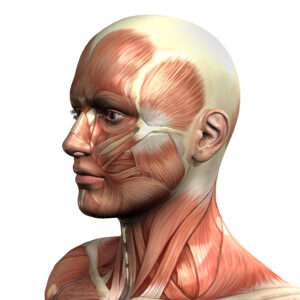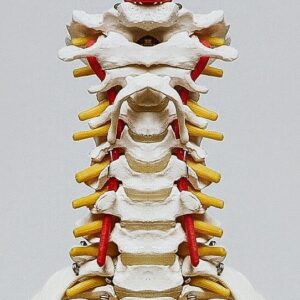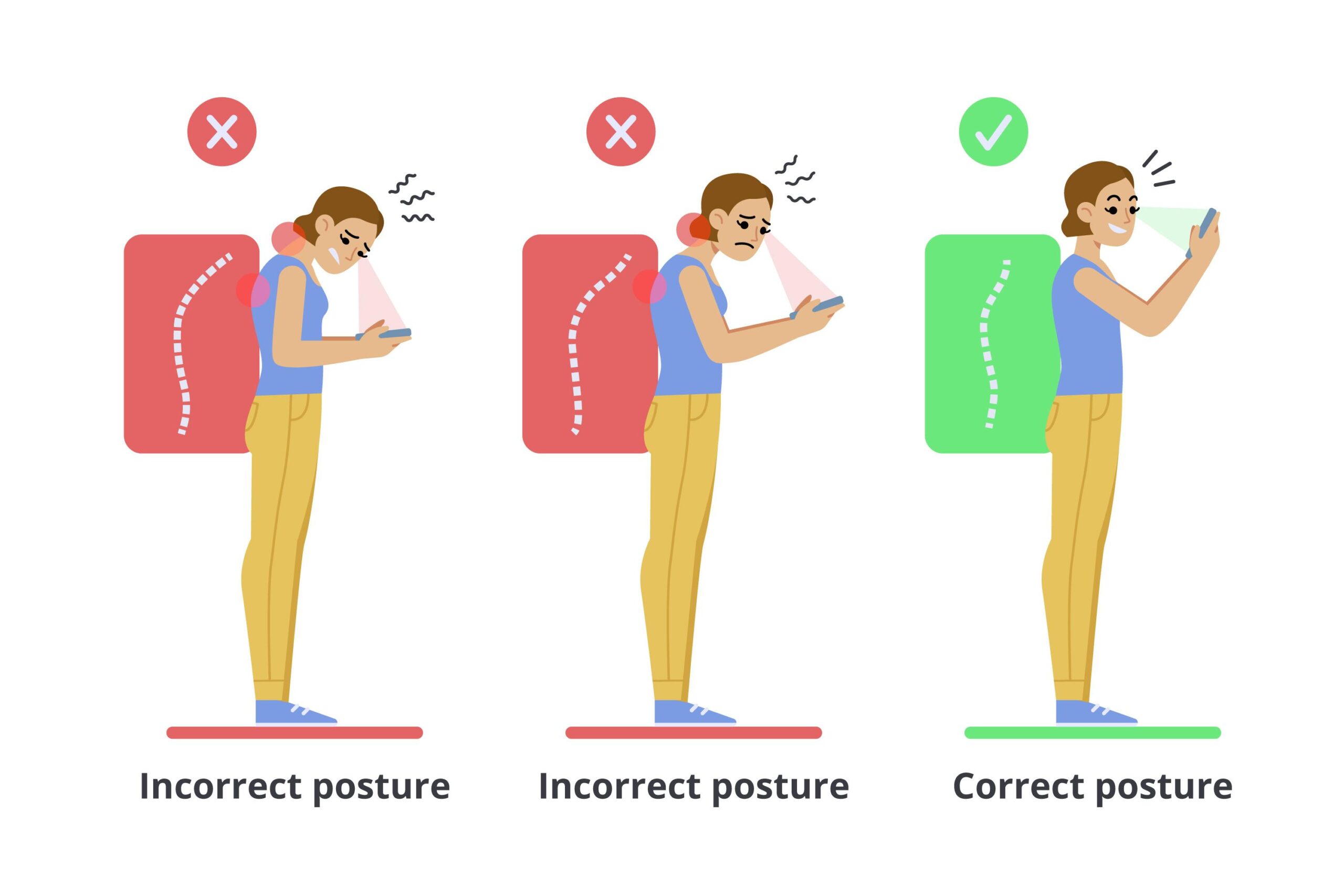Text Neck Disorder And Mobile Phone Addiction are strongly associated with advancements in technology and mobile phone use. Text Neck Disorder , or tech neck, is a repetitive stress injury caused by prolonged use of technology devices like smartphones, tablets, and laptops. It is characterized by pain and discomfort in the neck, shoulders, and upper back and is caused by the forward tilt of the head and neck when using these devices for extended periods. While not usually a serious medical condition, Text Neck Disorder And Mobile Phone Addiction syndrome can cause significant discomfort and may lead to long-term neck and shoulder problems if left untreated.
Prevention and treatment methods include postural adjustments, stretching and strengthening exercises, and taking regular breaks from technology use.
Read More: Along with Text Neck Disorder And Mobile Phone Addiction 2023 Read more about How Mobile Phones Cause Neck Pain
Table of Contents
How Text Neck Disorder And Mobile Phone Addiction are Related?

Text Neck Disorder And Mobile Phone Addiction are related because prolonged and repeated use of mobile phones and other handheld electronic devices, such as tablets e-readers, often involves the user tilting their head forward and down to view the screen. This posture significantly strains the muscles and ligaments in the neck and shoulders, leading to the development of text neck syndrome.
When we use our mobile phones, we often hold them in our hands and bring them closer to our faces, which causes us to hunch our shoulders and bend our necks forward. This posture puts a lot of pressure on the cervical spine and the neck muscles, leading to pain, stiffness, and discomfort.
Additionally, because mobile phone use is often prolonged and frequent, it increases the risk of developing text neck syndrome. Text neck syndrome is growing as people spend more time using their mobile phones and other handheld devices.
The repeated use of mobile phones and other handheld devices can contribute significantly to the development of text neck syndrome. Hopefully you have understand the relationship of Text Neck Disorder And Mobile Phone Addiction
Mobile Phone Addiction

Text Neck Disorder And Mobile Phone Addiction, also known as problematic mobile phone use, is a behavioral addiction characterized by excessive and compulsive use of mobile phones that interferes with daily activities and relationships.
Here are some common signs and symptoms of Text Neck Disorder And Mobile Phone Addiction:
- Excessive use: Spending a lot of time on the phone to the point where it interferes with other activities such as work, school, or socializing.
- Withdrawal symptoms: Feeling anxious or irritable when the phone is not accessible or available.
- Neglecting responsibilities: Failing to complete tasks or responsibilities, such as work or school assignments, due to phone use.
- Loss of interest: Losing interest in hobbies, activities, or socializing due to excessive phone use.
- Relationship problems: Having problems with personal relationships due to phone use, such as neglecting or ignoring loved ones.
- Physical symptoms: Experiencing physical symptoms such as eye strain, headaches, and neck or back pain due to prolonged phone use.
Prevalence of Text Neck Disorder
The prevalence of text neck syndrome is difficult to measure precisely, but studies suggest that it is becoming increasingly common.
A study published in the Journal of Physical Therapy Science found that the prevalence of neck pain among smartphone users was 50.8%. Another study published in the Journal of Back and Musculoskeletal Rehabilitation found that 84% adults of age 18 and 24 reported experiencing neck or shoulder pain using electronic devices.
Text neck syndrome is not limited to any particular age group or demographic. It can affect anyone with a significant amount of time using electronic devices, particularly with poor posture.
With the increasing use of electronic devices daily, the prevalence of text neck syndrome will likely continue to rise. It is essential to be aware of the risks and take steps to prevent text neck syndrome, such as good practising posture, taking breaks from device use, and performing regular neck and shoulder exercises.
Anatomy of Neck



The neck is part of the body that connects the head to the torso. Its complex structure contains many different bones, muscles, nerves, and blood vessels.
- Bones: The neck consists of seven cervical vertebrae, small bones forming the upper part of the spinal column. The cervical vertebrae are numbered C1 through C7, with C1 being the topmost vertebra that supports the skull.
- Muscles: There are many different muscles in the neck, including the sternocleidomastoid muscles, which run down the sides of the neck and are responsible for turning the head, and the trapezius muscles, which run from the back of the head to the shoulders and are responsible for moving the shoulders and neck.
- Nerves: The neck contains many different nerves, including the spinal nerves that exit the spinal cord and travel to the arms and hands. The most important nerve in the neck is the vagus nerve, which controls many critical bodily functions, including heart rate, breathing, and digestion.
- Blood vessels: The neck contains many different blood vessels, including the carotid arteries, which supply blood to the brain, and the jugular veins, which drain blood.
- Other structures: The neck also contains the oesophagus, which carries food and liquids from the mouth to the stomach, and the trachea, which carries air to the lungs.
The anatomy of the neck is complex and plays a critical role in many essential functions of the body, including movement, sensation, and communication. Understanding the anatomy of the neck is vital for diagnosing and treating neck-related conditions and injuries.
Movements Possible at the Neck
The neck is a highly mobile body part, allowing for various movements. Here are the main movements possible at the neck:
- Flexion: This is the movement of the chin towards the chest, where the head moves downwards.
- Extension: This is the head and neck movement backwards, where the head moves upwards.
- Lateral flexion: This is the head and neck movement to the side, where the ear approaches the shoulder.
- Rotation: This is the head and neck movement, where the head is turned to the left or right.
Various muscles control these movements in the neck, including the sternocleidomastoid, trapezius, scalenes, and levator scapulae muscles. It’s essential to maintain good posture and use proper technique when performing movements that involve the neck to avoid injury and strain.
Mechanism of the Cause of Text Neck Disorder

Text neck disorder is caused by repeated or prolonged neck bending while looking at electronic devices. This position of the neck can strain the muscles, ligaments, and bones of the neck and upper back, leading to pain, stiffness, and discomfort.
The mechanism of the cause of Text Neck Disorder And Mobile Phone Addiction involves several factors, including:
- Increased load on the neck: With bad posture strain on neck muscles increases. This increased load can cause strain and tension in the neck and upper back muscles.
- Muscle imbalances: Prolonged periods of being in a bent-forward position can cause specific muscles in the neck and upper back to become weak. In contrast, other muscles become overactive and tight. This can lead to muscle imbalances and further exacerbate the problem.
- Poor posture: Poor posture is a common cause of text neck syndrome. When the head is held forward and the shoulders rounded, it places a lot of strain on the neck and upper back muscles.
- Repetitive movements: Repeatedly bending the neck forward to use electronic devices can cause chronic strain on the neck and upper back muscles, leading to pain and discomfort.
Over time, the repeated stress on the neck and upper back can cause degenerative changes in the spine, leading to long-term damage and chronic pain.
What are the causes of Text Neck Disorder And Mobile Phone Addiction ?
The following are the common causes of text neck syndrome:
- Poor posture: The most common cause of text neck is poor posture, mainly when using electronic devices such as smartphones, tablets, or laptops. When the neck is bent forward, it places a lot of strain on the neck and upper back muscles.
- Increased device usage: The increased use of electronic devices in today’s digital age has increased the prevalence of text neck syndrome.
- Repetitive movements: Repeatedly bending the neck forward to use electronic devices can lead to chronic strain on the neck and upper back muscles.
- Muscle imbalances: Certain neck and upper back muscles may become weak due to prolonged periods of being bent forward while using electronic devices. Other muscles may become overactive and tight due to compensate for the weakness in other muscles.
- Degenerative changes: Over time, repeated stress on the neck and upper back can cause degenerative changes in the spine, leading to long-term damage and chronic pain.
Bad Posture and Text Neck Disorder
Prevention is critical when it comes to text neck syndrome. Practising good posture, taking breaks from device use, using ergonomic devices, and performing regular neck and shoulder exercises can help prevent text neck syndrome. How lousy posture causes text neck syndrome
Bad posture can cause text neck syndrome by placing a lot of strain on the neck and upper back muscles. When the head is bent forward, as it is when using electronic devices, the head weight increases, which increases the strain on the neck muscles.
With poor posture, the neck and upper back muscles are forced to work harder to hold the head up, leading to chronic strain and tension in these muscles. Over time, this can lead to pain, stiffness, and discomfort and even cause degenerative spine changes.
Additionally, poor posture can lead to muscle imbalances, where specific muscles become weak and others become overactive and tight, which can further exacerbate the problem.
Text neck syndrome is becoming more common as people spend more time using electronic devices with poor posture. Practising good posture, taking breaks from device use, and performing regular neck and shoulder exercises can help prevent text neck syndrome and alleviate its symptoms.
Signs and Symptoms of Text Neck Disorder And Mobile Phone Addiction
Signs and Symptoms of Text Neck Disorder are as follow:
- Neck pain: This is the most prevalent symptom of text neck disorder. The pain may be mild or severe and can be felt in the neck, shoulders, and upper back.
- Headaches: Chronic headaches, particularly those that start at the base of the skull, are a common symptom of text neck syndrome.
- Shoulder pain: The pain may be felt in one or both shoulders and can range from mild to severe.
- Upper back pain may be felt in the upper back, between the shoulder blades.
- Stiff neck: A feeling of stiffness in the neck, particularly after prolonged use of electronic devices.
- Tingling or numbness: A tingling or numbness sensation in the arms or hands can occur due to the pressure on the nerves in the neck.
- Decreased range of motion: Difficulty in moving the head and neck due to pain and stiffness.
If you experience these symptoms, taking a break from device use and practising good posture is essential. If the symptoms persist or worsen, consult a healthcare professional.
Clinical Presentation of Text Neck Disorder

The most common symptoms of text neck syndrome include:
- Neck pain: Pain in the neck is the most prevalent symptom of text neck disorder. The pain may be sharp or dull and accompanied by stiffness and discomfort.
- Upper back pain: Text neck syndrome can also cause pain in the upper back, between the shoulder blades. This pain is often caused by muscle tension and can be accompanied by tightness in the shoulders.
- Headaches: Text neck syndrome can cause tension headaches that typically start at the base of the skull and radiate up to the temples.
- Shoulder pain: The strain on the neck and upper back muscles can also cause shoulder pain.
- Reduced range of motion: People with text neck syndrome may have difficulty moving their necks and experience stiffness and limited range of motion.
- Tingling or numbness: Prolonged strain on the neck and upper back muscles can lead to nerve compression, which can cause tingling or numbness in the arms, hands, and fingers.
The symptoms of text neck syndrome can vary in severity and may develop gradually. If left untreated, Text Neck Disorder And Mobile Phone Addiction can lead to chronic pain and long-term damage to the spine. Seeking medical attention early on can help prevent further damage and alleviate symptoms.
Preventions of Text Neck Disorder
Preventing text neck syndrome involves changing your posture and device use habits. Here are some tips to help avoid Text Neck Disorder And Mobile Phone Addiction:
- Practice good posture: Sit straight with your shoulders back and your head up. Keep your feet flat on the ground and your back supported. Avoid slouching or hunching over your devices.
- Take breaks: Take frequent breaks from using your devices. Take a break every 20-30 minutes and stretch your neck and shoulders.
- Adjust your device: Adjust the height of your device so that it is at eye level. This will help you avoid bending your neck forward for extended periods.
- Use ergonomic devices: Consider using an ergonomic device, such as a standing desk or ergonomic chair, to reduce strain on your neck and upper back.
- Strengthen your neck and shoulder muscles: Regular exercise can help strengthen the muscles in your neck and shoulders, making them less prone to strain and tension.
- Stretch regularly: Regular stretching can help improve flexibility and reduce muscle tension in the neck and shoulders.
- Use voice commands: Consider using voice commands or a hands-free device to reduce your time looking down at your appliances.
Changing your posture and device use habits can reduce your risk of developing Text Neck Disorder And Mobile Phone Addiction and alleviate any symptoms you may be experiencing. If you are experiencing pain or discomfort, it is vital to seek medical attention to prevent long-term damage to the spine.
Treatment of Text Neck Disorder
Treatment for text neck Disorder may involve a combination of self-care measures, physical therapy, and medical interventions. Here are some common treatments for text neck syndrome:
- Self-care measures: Resting your neck, applying heat or ice, and taking over-the-counter pain relievers, such as ibuprofen, can help reduce pain and discomfort.
- Physical therapy: A physical therapist can teach you exercises to help stretch and strengthen the muscles in your neck and upper back. They may also use massage or manual therapy techniques to relieve muscle tension and improve their range of motion.
- Chiropractic care: A chiropractor may use spinal adjustments to realign the spine and reduce neck and upper back tension.
- Acupuncture: Acupuncture may help relieve pain and tension in the neck and upper back.
- Medications: If self-care measures and physical therapy do not relieve pain, a doctor may prescribe muscle relaxants, nerve pain medications, or corticosteroid injections.
- Surgery: In rare cases, surgery may be necessary to relieve nerve compression or correct a spinal deformity.
Preventing text neck syndrome is essential, and early treatment is critical to preventing long-term damage to the spine. If you are experiencing symptoms of text neck syndrome, such as neck pain or stiffness, it is essential to seek medical attention. Your healthcare provider can help you develop a treatment plan that is tailored to your specific needs.
Postural Correction of Text Neck Disorder

Text neck syndrome is caused by prolonged use of mobile devices, computers, or other electronic devices, leading to poor posture, especially in the neck and shoulders. Postural correction is vital for the treatment and prevention of text neck syndrome. Here are some tips for correcting your posture for Text Neck Disorder And Mobile Phone Addiction:
- Keep your phone or device at eye level: Instead of looking down at your phone, raise it to your eye level so that your neck is in a neutral position.
- Take frequent breaks: Take regular breaks from your devices to stretch and move around.
- Practice good ergonomics: When using a computer or laptop, ensure your screen is at eye level, your shoulders are relaxed, and your feet are flat on the ground.
- Strengthen your core and back muscles: Strengthening your core and back muscles can help improve your posture and prevent text neck syndrome.
- Use a posture brace or strap: A posture brace or strap can help remind you to maintain good posture and support your neck and shoulders.
- Seek professional help: If you are experiencing pain or discomfort, seek professional help from a physical therapist or chiropractor. They can provide exercises and treatments to help correct your posture and alleviate your symptoms.
Remember, maintaining good posture is essential for your overall health and well-being. By making these small changes in your daily routine, you can prevent and correct Text Neck Disorder And Mobile Phone Addiction and improve your posture for a healthier you.
Exercises to Treat Text Neck Disorder
Here are some exercises that may help treat text neck disorder:
Chin tucks: Sit or stand with good posture, and gently tuck your chin toward your chest without tilting your head forward. Hold for 5-10 seconds and repeat 10-15 times.
Shoulder blade squeezes: Sit or stand with good posture, and squeeze your shoulder blades together as if you are trying to hold a pencil between them. Hold for 5-10 seconds and repeat 10-15 times.
Neck stretches: Tilt your head to one side, bringing your ear toward your shoulder, and hold for 5-10 seconds. Repeat on the other side, and do 10-15 repetitions on each side.
Upper trapezius stretch:
- Sit or stand with good posture, and tilt your head to one side while gently pulling down on the opposite side of your head with your hand.
- Hold for 5-10 seconds and repeat on the other side.
- Do 10-15 repetitions on each side.
Chest stretches:
- Stand in a doorway with your arms at a 90-degree angle and place your forearms against the door frame.
- Step forward with one foot, and lean in.
- Hold for 20-30 seconds and repeat 2-3 times.
It is essential to consult with a physical therapist or healthcare provider before starting any new exercise program, especially if you are experiencing pain or discomfort due to Text Neck Disorder And Mobile Phone Addiction.
Summary-Text Neck Disorder And Mobile Phone Addiction
Text neck disorder, or tech neck, is caused by repeated or prolonged neck bending while looking down at electronic devices such as smartphones, tablets, or laptops. This posture puts a lot of strain on the neck and upper back muscles, leading to pain, stiffness, and discomfort. Text Neck Disorder And Mobile Phone Addiction is a common problem in today’s digital age, as many people spend a significant amount of time on their devices, often with poor posture. Over time, this can lead to chronic pain and even long-term damage to the spine.
Symptoms of text neck may include neck pain, shoulder pain, headaches, and upper back pain. Treatment options may include physical therapy, chiropractic care, massage therapy, and posture and device use changes. In severe cases, surgery may be necessary. Prevention is critical when it comes to text neck. Some tips to avoid this condition include taking breaks from device use, using ergonomic devices, maintaining good posture, and performing regular neck and shoulder exercises.
Do a comment if you completely know about Text Neck Disorder And Mobile Phone Addiction
Frequently Asked Questions
Q: Why does text neck syndrome occur?
Ans: In the US, a chiropractor coined the phrase “text neck”. Text neck is an overuse syndrome that typically develops due to severe neck strain from gazing down at any handheld mobile device.
Q: Text Neck Disorder And Mobile Phone Addiction ?
Ans: Neck and shoulder ache that is either sharp or throbbing. Reduced range of motion due to neck and shoulder stiffness/tightness. Headaches that come and go or are constant. Upper limb tingling and numbness along with nerve discomfort.
Q: Is text neck Serious?
Ans: The risk of text neck is significant and very real. You develop a text neck when you spend too much time looking down at something or hunching over it. This stance has been used for millennia in writing, sketching, stitching, and many other occupations.

2 Responses